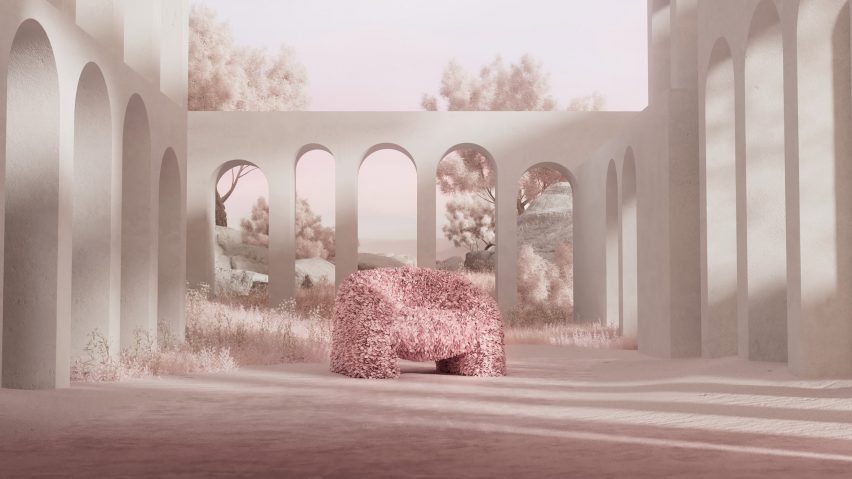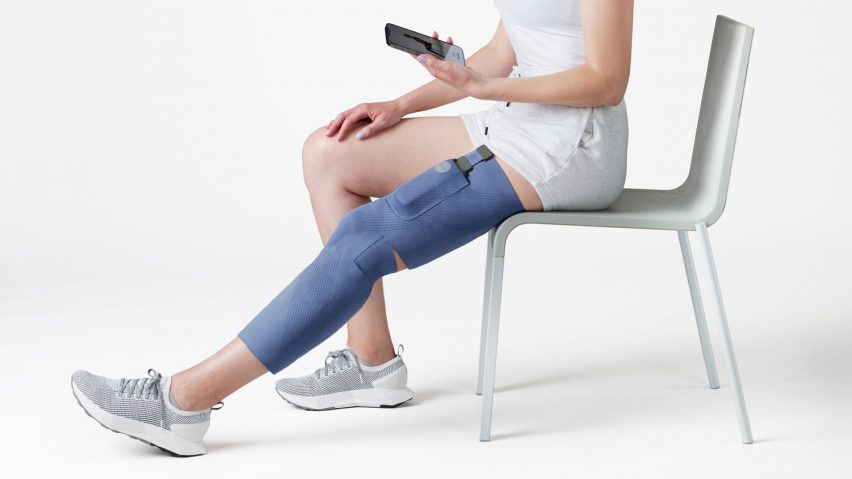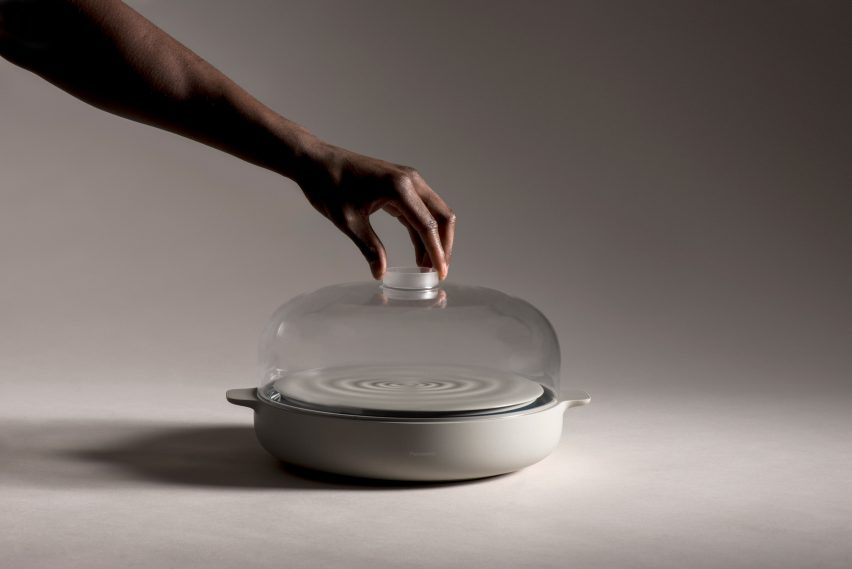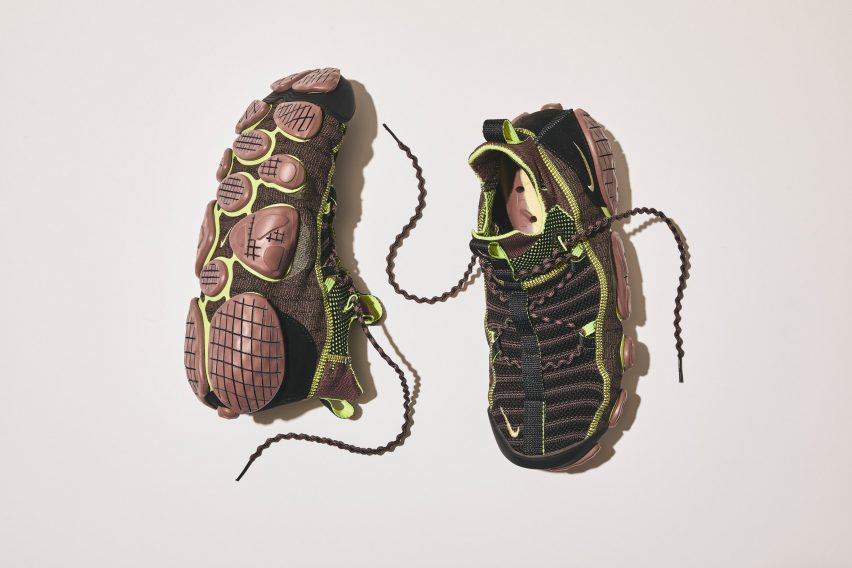
Artificial intelligence and the circular economy will dictate design in 2023
Designers including Philippe Starck and Titi Ogufere share their predictions for 2023's major design trends, from the continued rise of AI to how inflation could impact the industry.
To mark the start of 2023, Dezeen asked 10 designers and industry experts to share the materials, technologies and influences that they think are set to dominate design trends this year.
AI will transform creative processes
British designer Tom Dixon and French designer Starck told Dezeen that using artifical intelligence (AI) in the product-creation process will become more commonplace in 2023.
"AI will dominate the aesthetics and the conversation around design – knocking aside the more important and pressing subject of sustainability," said Dixon. "AI is the biggest threat and opportunity that the profession faces this year."

Starck added: "AI is the future of our natural intelligence, which allows dematerializing by going to the bone of things, to the square root, and thus to guarantee the minimum of matter, the minimum of energy by proposing real solutions that come from elsewhere, in a timeless way."
"Together, the human and AI may solve the world's problems and achieve a civilized civilization," Starck continued.
While using AI in the creation of products or buildings is nothing new, last year saw an explosion in software such as the popular Midjourney, which converts text or audio information into computer-generated images.
As a consequence, a range of products were released last year that incorporated AI. These included a fitness device called Tempo Move that uses AI to provide feedback on the user's form and a bionic wearable by startup Cionic and Yves Béhar's design studio Fuseproject that uses electric pulses and AI to correct muscle movements.
Digital experimentation continues to push boundaries
Andrés Reisinger, a 3D artist who created a virtual chair using CGI that later went into production, thinks that wider acceptance of digital technologies, from AI to CGI, will "create a new hybrid and co-existence" between virtual and physical worlds.
"I also think we will continue to see attempts to use the digital realm to widen perspectives and expand offerings in a way that hasn't been explored before," Reisinger continued.
"More and more design will be looked at and used as an additional art form, in the creation of also less realistic environments and objects, becoming the field for experimentation that blends functionality with creative expression."

Other technology that some designers believe will play a role in the future of design in 2023 includes smart devices.
According to interior and product designer Kelly Wearstler, items that use sensors to detect stimuli and adjust automatically to suit the user's needs will become more personalised.
"I expect smart home technology will have a greater presence in our lives, offering more conveniences, but it will be the human touch within that keeps our interiors warm and soulful," Wearstler told Dezeen.
"Design will evolve as technological innovations and handmade craft continue to interact," she said. "Objects and spaces that wed these two tracks are the future."
"The ecological crisis is set to be the agenda for many many years to come"
Another major trend that designers believe shows no sign of abating is the focus on circular design and the role it will play in mitigating design's impact on the climate.
Italian design studio Formafantasma, US-based Russian architect and designer Harry Nuriev and New York gallery The Future Perfect all voiced their desire to see more circular designs this year.
"Upcycling is going to be a mode of production to which an increasing amount of artists and designers will be turning globally," explained The Future Perfect founder David Alhadeff.
"I see it more and more among artists we're working with at The Future Perfect – from the Dutch designer Piet Hein Eek, who transforms scrapyard-sourced materials into meticulously crafted luxurious objects, to the work of emerging designer Jinyeong Yeon, who produced a series of seating made out of deadstock goose down jackets."

Formafantasma called for designs that go beyond end-of-life product solutions and instead consider how design might help regenerate ecosystems, shift consumer opinion and pave the way for sustainable solutions in other industries.
"We believe it is more important to think about long-term commitments," Formafantasma told Dezeen. "The ecological crisis is set to be the agenda for many, many years to come."
"In this sense what we hope will be more and more relevant in 2023 is the application of design not only to shape products but to help a broader strategic ecological thinking," the brand added.
"What will be even more relevant is the selection of materials that are more ecologically sound and attention to processes and where and how these materials are extracted. Due to more strict EU regulation, repair and recycling will have to be on the agenda of many of the biggest product producers."
Circular design refers to the creation of products and services that don't have a linear life cycle with a beginning, middle and end. Instead, they are made to last a long time before being recycled or regenerated at the end of their service life.
Nuriev, founder of New York agency Crosby Studios, thinks that the focus on recycling and circular design in 2023 could result in products that have a DIY look.
"I think DIY aesthetics are coming back in style," Nuriev said. "Objects that appear to be patched together, out of materials someone might easily have to hand, upcycling – things like that."

Recently, many brands and designers have started taking steps to eliminate waste and pollution from the lifecycle of their products. This has included the creation of new bio-based materials as alternatives to synthetic and highly polluting materials.
Several designers that Dezeen spoke to highlighted that biomaterials will become more widely used over the next year.
"In 2023, I will keep working on finding new sustainable solutions and materials, such as responsible bioplastics not derived from edibles by humans or grown on land suitable for growing food," Starck said.
Ethiopian-American designer Jomo Tariku agreed, saying: "I expect more designers to develop new ideas on how to repurpose and practice circular design from used clothing, ocean plastic, industrial and construction lumber and metal."
Designers will respond to global rising inflation
Meanwhile, Nigerian designer Nifemi Marcus-Bello pointed to concerns about rising inflation and its potential impact on supply and production.
"With a worldwide increase in inflation that began in mid-2021, with many countries seeing their highest inflation rates in decades, a good number of designers will continue to look into their maker community around them," Marcus-Bello told Dezeen.
"Making sure to consider production and manufacturing availability within their vicinity before crossing borders, working within these communities to identify materials that can be utilized to create products and enhance their inherent economy and ecosystem," he continued.
Design Week Lagos founder Titi Ogufere suggested that the industry will be well-equipped to face disruptive factors such as inflation given its reaction to the coronavirus pandemic.
"I believe challenging times are the most thriving times for creatives," argued Ogufere. "The global pandemic has forced the world to re-design itself, the interior and product design industry being at the epicentre of that reawakening," she added.
"This disruption has helped us innovate – I believe this season will see some of the best designs we have seen in years."